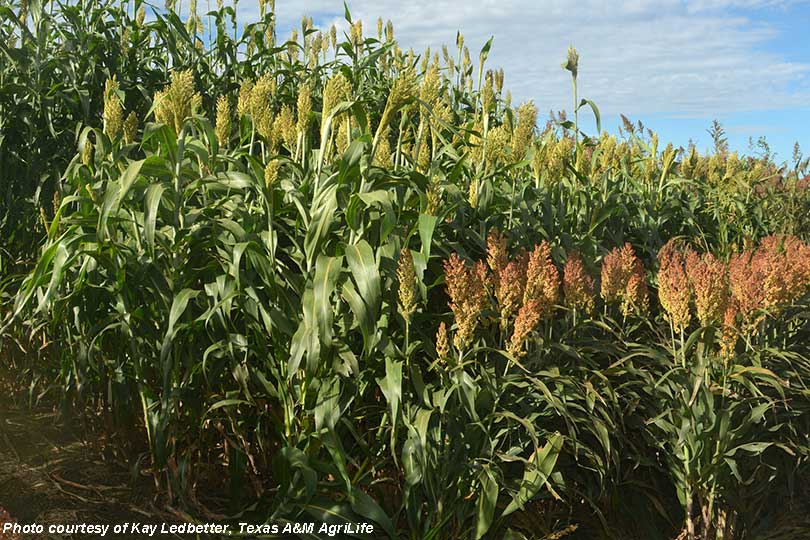New research indicates planting dates could impact sugarcane aphid infestations in grain and forage sorghum, according to Texas A&M AgriLife experts.
Researchers are evaluating when the pests cause the most damage to sorghums and what varieties they prefer.
Sugarcane aphids attack grain and forage sorghum, sucking sap from plant leaves and leaving behind a sticky honeydew.
“We know when infestations get started in the whorl stage and you don’t do anything to protect the sorghum, you can have as much as 80 to 100 percent yield loss in that sorghum,” said Dr. Ed Bynum, AgriLife Extension entomologist at Amarillo.
Researchers believe earlier planting dates could help eliminate some damage to sorghum.
“A very important integrated management approach is to plant crops earlier or later depending on the vulnerability of the different crop stages to the particular pest,” Dr. Ada Szczepaniec, AgriLife entomologist, told AgriLife Today. “We are hoping that planting early may help prevent the heaviest toll on yield.”
Determining which varieties of sorghum are more susceptible to sugarcane aphids is also an objective of their research.
“We are also testing different varieties, those we know are susceptible based on previous research, as well as some that show what we call ‘tolerance,’” Szczepaniec said. “These varieties can tolerate higher numbers of aphids or aphids do not increase in numbers as rapidly on these varieties compared to others.”
Early research indicates that some sorghum varieties can tolerate higher numbers of aphids or aphids do not increase as rapidly, Szczepaniec noted.
She said they have observed immature aphids develop inside “their not-yet-born mothers” through telescoping generations.
“What commonly happens soon after the aphids get established is an incredibly rapid increase in their populations,” Szczepaniec said. “This exponential population growth is very (difficult) for managing sugarcane aphids–40 aphids per leaf in one week may multiply to hundreds the next week.”
Szczepaniec said lady beetles, lacewing larvae, parasitoid wasps and syrphid fly larvae serve as biological controls to suppress aphids.
After two years of infestations in the High Plains, Bynum said they know the aphids generally are brought in from the South.
“They don’t overwinter north of Amarillo, or haven’t in the last two years, so we know that the aphids have to be blown back in here,” Bynum said.
More research will continue over the next several years because weather and precipitation levels can affect results.

